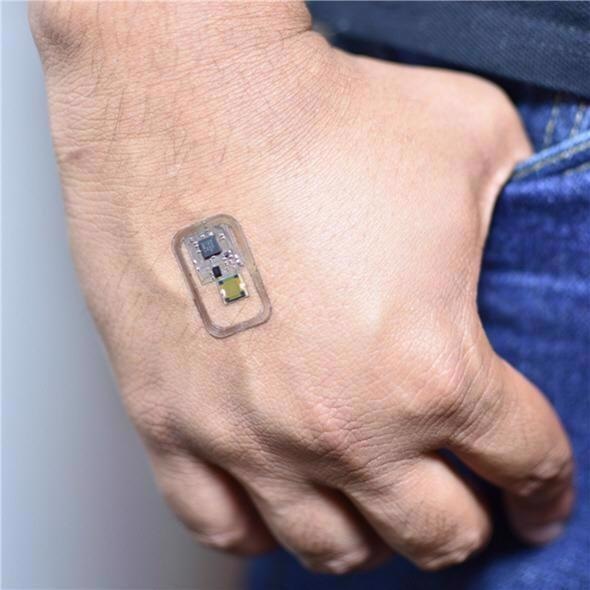AZoSensors speaks with Dr. Md. Ataur Rahman from RMIT University about his research into developing a lightweight, wearable sensor that can detect nicotine in real-time and wirelessly transmit the data to electronic devices such as a smartphone.
Nicotine has been the topic of interest for many years. Why would you say this is?
Nicotine has been the topic of interest for years due to its importance in medicine, toxicology and the tobacco industry. Though we always say about the detrimental effect of nicotine on cardiovascular and respiratory disorders, including lung cancer, research has also been carried out to understand the medicinal value for Alzheimer’s, Parkinson’s and ulcerative colitis.
Pharmacologically, it is a compound that acts on the central nervous system in the form of mood elevations, a sense of euphoria and reviving energy.
What inspired your research into developing a device that can monitor the potential health effects of nicotine in electronic cigarettes?
Research revealed the acute and chronic effects of nicotine in electronic cigarettes on the pulmonary system. The motivation behind our research is based on the following key points:
- For insurance companies to monitor their vulnerable patients to nicotine-born diseases.
- For secondary schools to encourage their students to refrain from vaping.
- Homestay companies need this device to discourage people from vaping and smoking in their non-smoking zone.
- Patients with lung diseases, such as Chronic Obstructive Pulmonary Disease (COPD), need this kind of device to avoid hazardous vaping/smoking areas.
Despite being developed to facilitate the cessation of conventional cigarettes, nicotine, the main constituent of e-cigarettes, can still have detrimental effects on the body due to its carcinogenic potential.

Image Credit: Shutterstock.com/ DedMityay
What sort of damage does nicotine have on the body?
Nicotine can damage the genome, disrupt the cellular metabolic process and facilitate the growth and spreading of transformed cells. These detrimental effects result in tumor-promoting activities on the body.
Nicotine also affects multiple organs, including the respiratory system, by altering airflow through the conducting airways, increasing oxidative stress, interfering with lung development and impairing host defense against bacterial and viral pathogens.
Why is it important to monitor and measure ambient nicotine?
The ability to detect nicotine in open air will not only enable the monitoring of smokers or vapers but also safeguard the vulnerable, such as infants, from second-hand and third-hand smoke.
Can you give an overview of some of the current assays for measuring ambient nicotine levels, such as those carried out in labs as well as portable nicotine sensors? Why are these assays considered impractical?
Two types of nicotine sensors have been reported in the literature, namely the electrochemical nicotine sensor and the gasochromic nicotine sensor, recently.
In the case of the electrochemical nicotine sensor, nicotine must be in liquid form. For instance, nicotine can be monitored in sweat with a wearable sweatband. However, continuous measurement with fluidic sensors is not possible due to the fluctuating presence of sweat. Additionally, nicotine levels in sweat do not always correlate with acute intake.
The recently reported gasochromic sensor can sense nicotine, but only in the presence of sunlight by changing the color of metal-organic nanotubes. Hence, a suitable nicotine sensor capable of detecting nicotine in real-time is needed to continuously measure nicotine exposure and to monitor smokers.
How does your wearable, vanadium dioxide (VO2)-based chemoresistive sensor overcome the challenges associated with other types of nicotine sensors?
Crystalline vanadium dioxide (VO2) is very stable in open air. It does not require any external triggering, such as light, to detect nicotine. The VO2 can even respond to nicotine in the presence of other environmental gases such CO, H2, CH4, H2S, NO2, etc.

Image Credit: Rahman, M. and Cai, L., et al., (2021) Nicotine Sensors for Wearable Battery-Free Monitoring of Vaping. ACS Sensors, [online] 7(1), pp.82-88. Available at: https://pubs.acs.org/doi/abs/10.1021/acssensors.1c01633
In the absence of nicotine, the sensor returns to its initial condition. The repeatable response and recovery cycle allows it to monitor the nicotine instantly for a longer period without any biodegradation.
When applied to the skin, this battery-free sensor can measure the wearer’s exposure to vaporized nicotine in open air. Can you give an overview of how this sensor works?
When the sensor is exposed to nicotine the resistance of the VO2 decreases.
Any change in the resistance of VO2 due to incoming nicotine is detected by a Wheatstone bridge configuration. The differential voltage on the branches of the Wheatstone bridge is amplified by using an instrumentation amplifier and then fed into the analog-to-digital converter (ADC) of the near-field communication (NFC) chip. After the digitalization of the analog signal, the chip transmits the signal through the antenna to a nearby smartphone. Then, the homemade smartphone app records and illustrates the corresponding sensing data on the screen.
With regards to powering the electronics, when the smartphone is brought within close proximity to the sensor surface, the loop coil antenna harvests energy from the radiation of the mobile phone. The harvested energy is then rectified and regulated to provide an uninterrupted power supply to the electronics when the device is in operation. Hence, the device can work without a battery and wire connection.
Did you come across any challenges during your research, and if so, how did you overcome them?
This research required multidisciplinary scientific knowledge ranging from material science for exploring and optimizing the sensing material, electronic engineering for developing battery-free, wireless electronics, and computer science for developing firmware and app to demonstrate sensor response on the mobile’s screen and to send data to the cloud-connected interface.
We ultimately overcame any issues by collaborating with scientists in the United States and Australia.
Aside from nicotine detection, could this device be used for the real-time tracking of any other dangerous substances?
For real-time monitoring of nicotine vapor from e-cigarettes in the air, the sensor is integrated with an epidermal near-field communication (NFC) interface that enables battery-free operation and data transmission to smart electronic devices to record and store sensor data.
Collectively, the technique of sensor development and integration expands the use of wearable electronics for real-time monitoring of hazardous elements in the environment and bio-signals wirelessly
What are the next steps for your research?
The nicotine sensor is only the start of this research. While we are looking for commercial opportunities for this work, we are extending our research to detect air-borne hazardous substances such as COVID-19 and flu viruses.
About Dr. Md. Ataur Rahman
 Dr. Md. Ataur Rahman is an electronic materials engineer who specializes in wearable electronics and their use for monitoring vital health signals, detecting air-borne hazardous substances, and mimicking sensory receptors for skin-like electronics.
Dr. Md. Ataur Rahman is an electronic materials engineer who specializes in wearable electronics and their use for monitoring vital health signals, detecting air-borne hazardous substances, and mimicking sensory receptors for skin-like electronics.
He is currently employed as a Research Fellow at the School of Electronic and Telecommunications Engineering at RMIT and is closely involved in transforming research from lab to industry. His areas of interest include energy harvesting, wireless and battery-free electronics, flexible and stretchable resistive random access memory (ReRAM), and wearable sensors.
Disclaimer: The views expressed here are those of the interviewee and do not necessarily represent the views of AZoM.com Limited (T/A) AZoNetwork, the owner and operator of this website. This disclaimer forms part of the Terms and Conditions of use of this website.